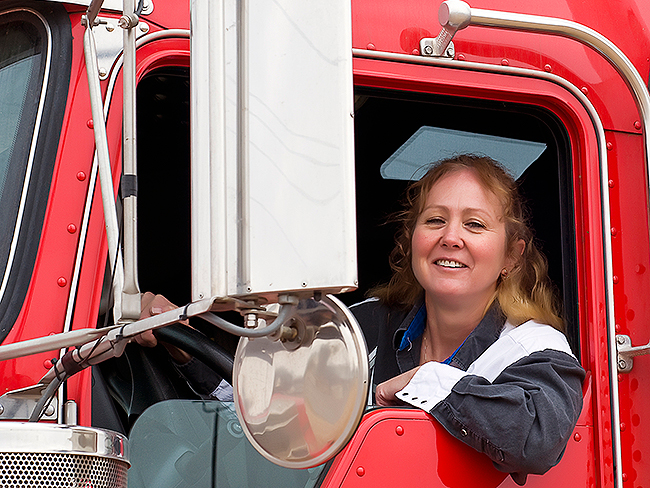Staff Reporter
Women Drivers Scarce Despite Data Supporting Their Qualifications

FRISCO, Texas — Despite having a lower turnover rate than their male counterparts and exhibiting safer driving habits, women still make up just a small portion of the truck-driving workforce.
The Women In Trucking Association reports that 7% of truck drivers are women. Emilie Worsham, a senior business systems analyst for Omnitracs, said the scarcity of female drivers is likely due to a combination of companies failing to reach them and women not recognizing trucking as a career opportunity.
Worsham led a data-driven talk on fleet operations at WIT’s annual conference Nov. 12. She said that, for many job-seeking women, trucking does not automatically come to mind.
TIPS FROM MANAGERS: Pursue knowledge, act with confidence
“I honestly think that they don’t know that being a truck driver is an option for them because it is a male-dominated career,” Worsham said. “I think companies just now have started doing more with recruiting of women, but I also think that women maybe don’t see it as a viable option to them.”
For her research, Worsham examined 7,538 U.S.-based trucking companies. She found that 40% of these companies did not employ any women drivers.
Worsham’s research indicates that women are safer drivers. She found that female drivers make up 8-12% of the total number of drivers who cause critical events, such as excessive speeding, collisions and lane departures. Between October 2017 and September 2018, women had a lower percentage of accidents than their male counterparts (7.5% versus 8.3%).
We’ve got a full house at the #Accelerate18 Conference & Expo! #WomenInTrucking pic.twitter.com/5BDo8Vd1sE — WomenInTrucking (@WomenInTrucking) November 12, 2018
The American Transportation Research Institute has corroborated these findings. ATRI published an analysis from its updated Crash Predictor Model on July 31. The Crash Predictor Model quantifies the likelihood of future crash involvement for truck operators based on certain driving behaviors.
On the whole, ATRI’s research found that women were safer truck drivers than men. Men were 88% more likely than women to have a reckless driving conviction. Gender also bore an impact on the likelihood of crash involvement. For example, men were 20% more likely to be involved in a crash than women.
In addition to being safer drivers, women typically remain at trucking jobs longer. American Trucking Associations has reported that truckload carriers are experiencing 73-97% annual turnover. Worsham revealed that, between October 2017 and September 2018, women had a turnover rate of 50% and men had a turnover rate of 62%.
Steve Bravata, an operations manager for Gordon Food Service, attended the session to get a better understanding of the issues women face in the trucking industry. Gordon Food Service, based in Wyoming, Mich., has 2,900 U.S.-based drivers and serves the eastern portion of the country. Bravata estimates that about 1% of the company’s drivers are women.

Getty Images
Bravata cited the driver shortage as a pressing reason to integrate more women into the industry. ATA this year has reported the shortage at more than 50,000 drivers. He said he hadn’t heard the statistics about the safety benefits women tend to offer.
“That’s really interesting to me, the whole safer driver aspect,” Bravata said. “There’s a big driver shortage. How do you get a more diversified workforce that can bring extra to the table?”
Research, reports, workshops and seminars are useful tools for companies looking to bring in more women, according to Worsham. She said that such information can benefit recruiters and job-seeking women alike.
“I think the more they know, the more they will do,” Worsham said.




